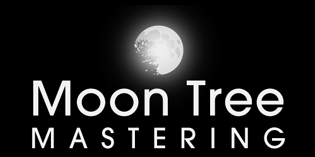When it comes to recording audio, whether it’s for music production, podcasts, or voice-overs, avoiding common mistakes can make a significant difference in the quality of the final product. By being aware of and steering clear of these recording pitfalls, you can ensure that your recordings sound professional and polished. In this article, we will explore the top 10 recording mistakes to avoid to help you capture the best possible sound.
1. Insufficient Room Acoustics
One of the most crucial factors in achieving high-quality recordings is having a suitable recording environment. Poor room acoustics can lead to unwanted reflections, echoes, and an overall muddy sound. To avoid this, consider acoustic treatment by using bass traps, diffusers, and absorbers to optimize the room’s sound.
2. Improper Microphone Placement
Incorrect microphone placement can result in unbalanced recordings or excessive background noise. Make sure to position the microphone correctly according to the sound source and desired effect. Experimenting with different distances and angles can help you find the sweet spot for capturing the best sound.
3. Neglecting Pop and Wind Filters
Plosive sounds (pops) and wind noise can be major distractions in vocal recordings. To prevent these issues, use pop filters or windscreens to minimize their impact. These filters help reduce the plosive sounds caused by strong puffs of air hitting the microphone, ensuring a clearer and more pleasant listening experience.
4. Overlooking Signal Levels
Maintaining proper signal levels is essential to avoid distortion or a weak signal during recording. Be cautious not to overdrive the audio input, as this can result in clipping or a distorted sound. On the other hand, recording with levels too low may introduce unwanted noise. Monitor and adjust your signal levels accordingly to achieve a clean and balanced recording.
5. Ignoring Headphone Mix
While recording, it’s important to monitor the sound using headphones. Neglecting to create a proper headphone mix can lead to inaccurate performances or misjudgment of the recorded sound. Ensure that the performers can clearly hear themselves and any accompanying tracks or instruments to deliver their best performance.
6. Lack of Preparation
Recording sessions can be time-consuming and costly. Failing to prepare adequately can lead to wasted time, mistakes, and frustration. Before hitting the record button, ensure that instruments are tuned, lyrics are finalized, and any necessary equipment or software is set up and tested. Preparedness will contribute to a smooth and efficient recording process.
7. Skipping Multiple Takes
Relying solely on a single take can limit the potential of your recording. Even seasoned musicians and performers often require multiple takes to capture the perfect performance. Don’t be afraid to experiment and try different approaches to achieve the desired outcome. Multiple takes provide more options during the mixing and editing stages.
8. Neglecting Editing and Post-Processing
Recording mistakes can sometimes be fixed during the editing and post-processing stages. However, relying too heavily on post-production can result in an unnatural sound. Strive to capture the best sound during recording, and use editing as a tool to enhance the quality, rather than relying on it to fix fundamental flaws.
9. Disregarding the Importance of Monitoring
Monitoring your recordings is vital to ensure that the sound you’re capturing matches your vision. Use high-quality studio monitors or headphones to accurately assess the recorded audio. Pay attention to details, such as tonal balance, stereo imaging, and any potential issues or artifacts that need to be addressed.
10. Forgetting Backup and Storage
Once you’ve captured a fantastic recording, don’t forget to create backups and ensure proper storage. Loss of data can be devastating, and taking precautions such as backing up your files to multiple locations or using cloud storage services can save you from the heartache of losing your hard work.
Conclusion
Avoiding these top 10 recording mistakes can greatly improve the quality of your recordings and elevate them to a professional level. By considering the impact of room acoustics, microphone placement, pop filters, signal levels, headphone mixes, preparation, multiple takes, editing, monitoring, and backup and storage, you can ensure that your recordings sound polished, balanced, and captivating.
FAQs
Should I invest in acoustic treatment for my recording space?
Investing in acoustic treatment is highly recommended, as it helps optimize the sound quality of your recordings by minimizing unwanted reflections and echoes.
Can I fix recording mistakes during the editing process?
While some mistakes can be corrected during editing, it’s always best to strive for high-quality recordings from the start. Editing should enhance the sound, not fix fundamental flaws.
How many takes should I record for each performance?
Recording multiple takes gives you more options during the mixing and editing stages. Aim for capturing at least a few takes to ensure you have sufficient material to work with.
What are some common signs of improper signal levels during recording?
Clipping (distortion) or a weak signal are common signs of improper signal levels. Monitor your levels closely to achieve a clean and balanced recording.
What is the best way to store and back up my recordings?
Creating backups in multiple locations, such as external hard drives or cloud storage services, is the best way to ensure the safety and availability of your recordings.
